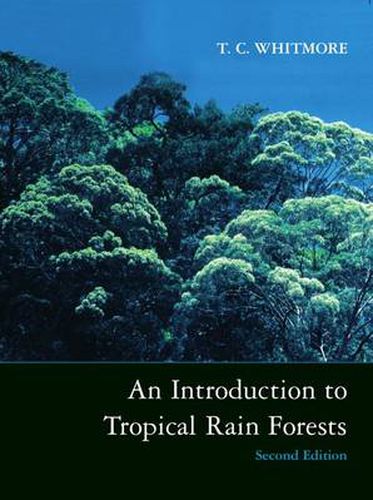Readings Newsletter
Become a Readings Member to make your shopping experience even easier.
Sign in or sign up for free!
You’re not far away from qualifying for FREE standard shipping within Australia
You’ve qualified for FREE standard shipping within Australia
The cart is loading…






This new edition of Whitmore’s classic introduction to tropical rain forests has been comprehensively revised and updated, reflecting the changes which have taken place since it was first published in 1990. The sections on human impact have been extended to include a new global assessment of deforestation as well as details of new research on biodiversity and conservation. Discussion of the future of the rain forests and priorities for action is incorporated. The book remains unique in linking rain forest biology and ecology with silviculture, and with concerns over sustainable resource utilization and the future of the tropical rain forests. It includes sections on the diverse animal and plant life forms which are found in the rain forest, and the interconnections between them. Nutrient cycles and forest dynamics are fully explained, with new data on ecophysiology and forest microclimates. The geologic and climatic history of rain forests, and the wide-spread canopy disturbances now understood to have occurred in the past, are explored. Accessibly written, and illustrated throughout with line-drawings and photographs, this is a must for biology and geography students, and anyone else who seeks to know more about the nature and importance of the world’s tropical rain forests.
$9.00 standard shipping within Australia
FREE standard shipping within Australia for orders over $100.00
Express & International shipping calculated at checkout
This new edition of Whitmore’s classic introduction to tropical rain forests has been comprehensively revised and updated, reflecting the changes which have taken place since it was first published in 1990. The sections on human impact have been extended to include a new global assessment of deforestation as well as details of new research on biodiversity and conservation. Discussion of the future of the rain forests and priorities for action is incorporated. The book remains unique in linking rain forest biology and ecology with silviculture, and with concerns over sustainable resource utilization and the future of the tropical rain forests. It includes sections on the diverse animal and plant life forms which are found in the rain forest, and the interconnections between them. Nutrient cycles and forest dynamics are fully explained, with new data on ecophysiology and forest microclimates. The geologic and climatic history of rain forests, and the wide-spread canopy disturbances now understood to have occurred in the past, are explored. Accessibly written, and illustrated throughout with line-drawings and photographs, this is a must for biology and geography students, and anyone else who seeks to know more about the nature and importance of the world’s tropical rain forests.